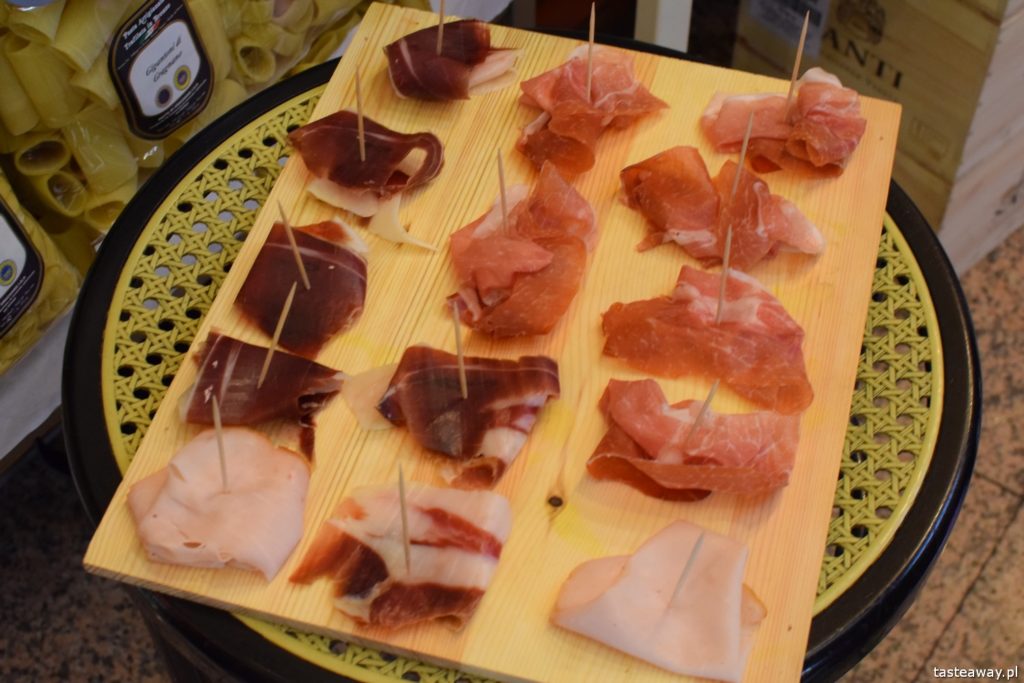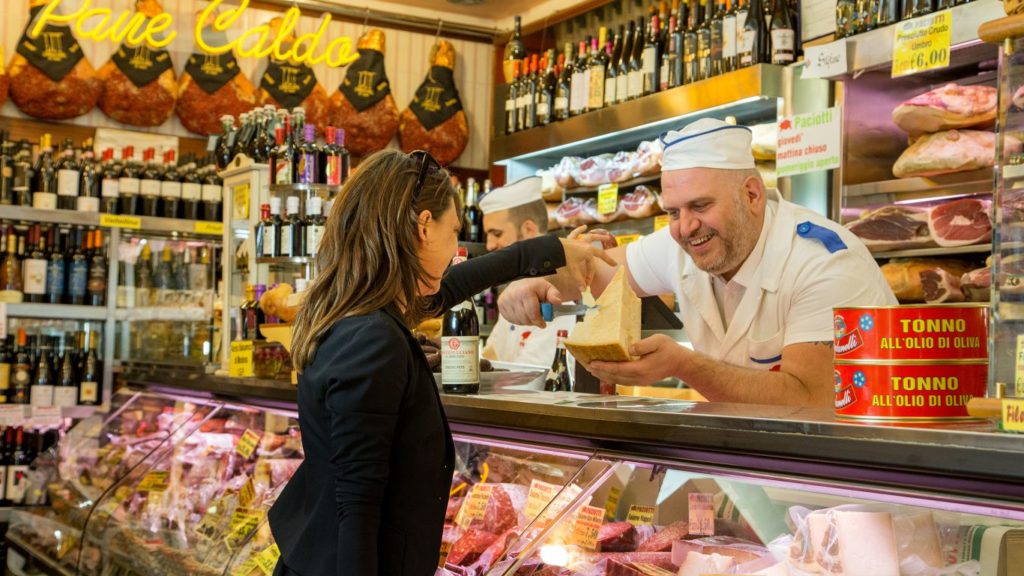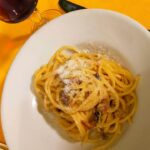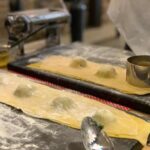
Prosciutto in Italy
How to Find the Best Prosciutto in Italy
Italy is famous for its beloved prosciutto, which comes in two forms; crudo meaning raw and cotto meaning cooked.
The word prosciutto means to dry out the moisture, which is one of the first steps in making the ham. The elimination of the moisture also allows the meat to having a longer shelf time, even when served at room temperature.

The history of cured ham dates back to pre-Roman times, and the traditional methods of production are still carried out these days. Firstly, trimming the ham, made from the rear haunches of skin and fat.
Then the legs of the pigs are squeezed to remove the moisture, then covered with salt and left for a few months. They are then rinsed and hung to dry, in a well ventilated cool room, a procedure known as curing.
Typically the curing process takes a few years, with the finer hams taking longer to cure.
The story of Prosciutto is all about the story of pigs, as it takes the best pigs eating the right foods in order to produce the perfect ham.
Every region in Italy that have pigs, produces a type of Prosciutto but only a few are available outside of Italy. The price can change greatly depending on the type and the maturity age.
Each type of prosciutto has it’s own flavors which make it unique and different in deliciousness. The most famous types of prosciutto include Parma in Emilia-Romagna, San Daniele in Friuli Venezia Giulia and Cinta Senese from Tuscany.

Both Parma and San Daniele hams are considered sweet prosciutto, as apposed to the tuscan ones which are saltier.
The unique taste from prosciutto di Parma, is from locally raised pigs which are fed a strict diet that includes whey from locally made Parmigiano-Reggiano cheese.
The prosciutto di San Daniele is darker and has a more delicate flavor. It uses local sea salt in sparse amounts and stacks the hams on top of each other. Prosciutto Toscano of Tuscany is a savory ham accompanied with pepper, garlic, rosemary and juniper.
When choosing a prosciutto, it is important to look for the DOP or in English PDO (Protected Designations of Origin). The DOP stamp guarantees that the prosciutto is made from the healthiest pigs. It also ensures a natural curing process, without the use of coloring or additives like nitrates, which are used to enhance the color of the prosciutto.
Also be sure to get you prosciutto cut from the leg, rather than buy it pre-sliced, to ensure maximum taste and freshness. The ideal way to eat prosciutto is straight out of the paper it i sliced it into. Alternatively pairing it with slices of melon, buffalo mozzarella or some fresh figs.

The best place to purchase prosciutto is Rome is the legendary delicatessen Paciotti Salumeria, voted the number one gourmet food shop in Rome on TripAdvisor. It is a owned by Antonio and his three sons, Stefano, Roberto and Luca.
Paciotti offers over 100 types of cured meats and salami, as well as 300 types of cheeses. They also sell the finest olive oils and aged balsamic vinegars.
It’s one of the favorite venues on The Roman Food Tour.
Conclusion
To conclude, there are many types of Italian prosciutto, coming from all over the country, offering various types of tastes.
Let me know in the comments section your favorite type of prosciutto.
For more information email us or see our Rome Travel Blog.



